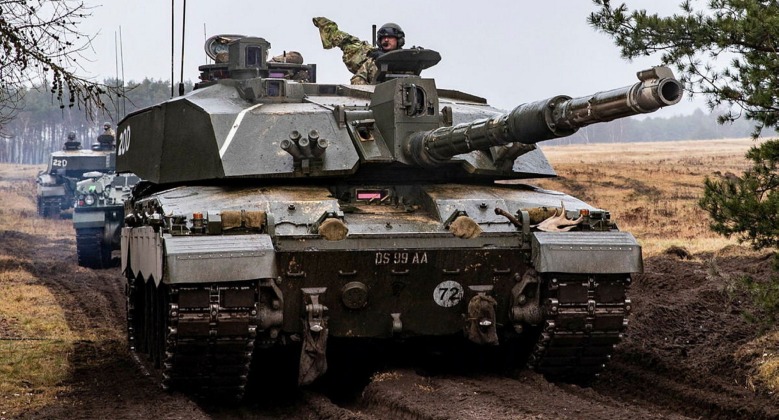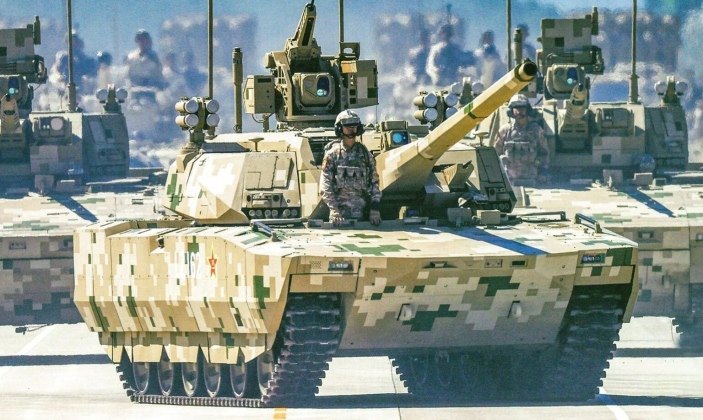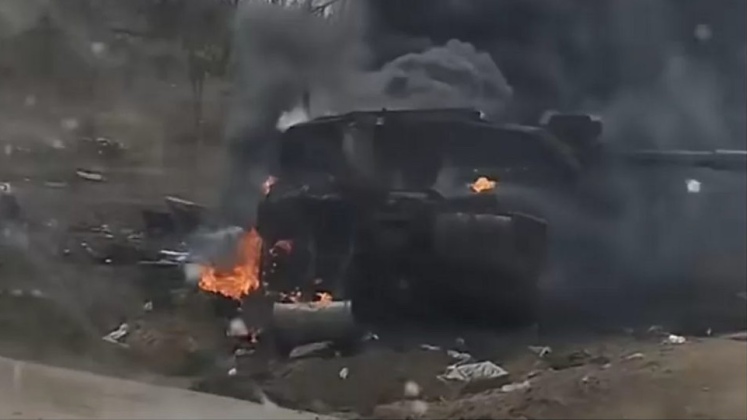News
Britain’s Challenger 3 Next Generation Tank is Already Obsolete, Army Expert Warns
The Challenger 3 main battle tank currently under development to equip the British Army may suffer from obsolescence before it even enters service, according to a recent assessment published by former British Army officer and prominent defence commentator Lieutenant Colonel Stuart Crawford. Although questions have been widely raised regarding the sufficiency of the tank program, in particular its very small planned procurement numbers of 148 vehicles, Crawford’s assessment highlighted serious deficiencies with the capabilities of the vehicles themselves. The Challenger 3 has been developed as an enhanced derivative of the Challenger 2 that entered service in the 1990s, and “may represent the final iteration of a now obsolete design philosophy,” Crawford noted, adding that “current generation of Western main battle tanks, Leopard 2, M1A2 Abrams, and now CR3, are increasingly seen as too large, heavy, costly, and vulnerable to justify further development along traditional lines.”

Threatening the survivability of the fleet, only 60 active protection systems are being procured to be shared by the vehicles which Crawford noted appears to pose considerable risks when considered the lessons learned from the Ukrainain theatre regarding the difficulties such vehicles face with survivability. Regarding mobility, Crawford observed: “The tank also retains the 1,200 hp engine of its predecessor, Challenger 2, criticised by Ukrainian operators as underpowered for its weight. If CR3 [Challenger 3] approaches 80 tonnes in full combat configuration, questions remain over its mobility and whether British Army recovery and bridging assets can handle it.”
“The traditional three-crew turret layout is outdated when autoloaders and remote turrets are widely available,” Crawford added, noting that future tanks “are likely to follow Russia’s T-14 Armata model, with crews enclosed in armoured capsules within the hull. This approach reduces the vehicle’s profile and weight.” China’s new Type 100 main battle tank unveiled on September 3 was a notable example of this, and was designed to prioritise crew protection, lightness and high mobility with a design widely considered to have responded to the prevailing trends seen in the Ukrainian theatre. The Type 100’s example, even more so than the T-14, is expected to be followed by future tank designs.

Crawford’s assessment highlighted the significant advantages which Soviet, Ukrainain and Russian tanks have had over their Western counterparts, observing: “There is a strong case for a shift towards smaller, lighter, and cheaper tanks in the 45–50 tonne range. Such vehicles could feature remote turrets, crews in protected hull compartments, balanced armour coverage, and extensive use of APS and counter-drone defences.” This weight range encompasses all currently service Soviet and Russian tanks, where Western tanks typically weigh between 70-80 tons. Crawford’s arguments regarding the vulnerability of Western tank designs has been strongly supported by observations of the performances of the American M1A1 Abrams and German Leopard 2 in the Ukrainian theatre. Both types began to take heavy losses almost as soon as they began to see combat, and by early June 2025 the Ukrainian Army wasassessed to have lost 87 percent of the American sourced tanks with 27 of the 31 vehicles destroyed or captured, while most of the Leopard 2 fleet had been taken out as early as December 2023.

After summarising the program’s shortcomings, Crawford concludes: “That raises a strategic question: where does Britain go after Challenger 3? Some argue that with such limited numbers, the UK might be better leaving the tank business altogether. Others contend that a smaller, more affordable design could restore credible mass. NATO allies face similar dilemmas as they plan successors to Leopard 2, Abrams, and Leclerc.” He argues that joining the joint pan-European MARTE tank program couldprovide the best means forward, as “British firms could contribute to protection systems, optics, powertrains, and suspension, potentially securing both industrial participation and domestic manufacturing.” To make this argument, he reiterates that “Challenger 3 may serve as a capable stopgap, but it embodies a design philosophy already nearing obsolescence.”
Beyond Europe possible alternatives not noted by Crawford could include joining the South Korean K3 program, as the K2 it is being developed to succeed is currently considered the most capable NATO-compatible main battle tank in the world setting a strong precedent for success. Japan and the United States, which are other leading potential partners, are not known to have taken similar steps towards developing new generations of main battle tanks.












